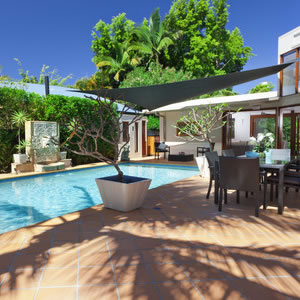State of Markets - NSW Feburary 2015
Fast movers
The New South Wales property market finished the year on a high

In the 12 months leading up to December 2014, Sydney properties recorded value growth of 12.4 per cent, according to CoreLogic RP Data.
This figure far exceeds the national home value growth rate for the year of 7. 9 per cent.
Melbourne was the only state capital other than Sydney to record annual value growth of more than 5.0 per cent.
However, Cameron Kusher, senior research analyst at CoreLogic RP Data, says that the state capital’s fast-paced growth will leave some investors underwhelmed.
Mr Kusher says that “affordability hurdles in Sydney and, to a lesser extent, in Melbourne, are making it increasingly difficult for first-time buyers to enter the market”.
Herron Todd White identifies western Sydney as the best area for investors looking to enter the market on a budget lower than $1 million.
According to the property valuation group, in the past 12 months this area of Sydney has seen consistent growth and “shows little sign of slowing”.
Low interest rates, limited stock and high demand are highlighted as the key drivers for this value growth.
The group reports that first home buyers can still secure a new four-bedroom, two-bathroom family home for less than $600,000 in areas such as Oran Park, Gregory Hills or Leppington.
Investors looking to renovate an older property are advised to consider legislation recently introduced by the New South Wales Government.
From 15 January 2015, DIY renovators and building professionals in the state are obliged to abide by new regulations under the Home Building Amendment Act 2014. The changes affect licensing, owner-builders, the Home Building Compensation Fund and disputes, defects and statutory warranties.
Fair Trading NSW says the new laws will help to modernise industry practices, reduce red tape and support consumer confidence and building activity across New South Wales.
Changes relating to contracts commence in March.
One of the main changes that could impact investors undertaking renovations in New South Wales is the raising of the threshold for requiring a licence for building and general work – from work over $1,000 to work over $5,000 (including labour and materials).
Specialist work, such as plumbing, electrical and air conditioning, will still require a licence regardless of the cost of the work.
In focus
There has been a significant demographic shift in this harbourside suburb over the last two years, from older residents to young families.
Many new residents are opting to owner-occupy renovated apartments that are close to the harbour shoreline.
The influx of young families has also driven up property prices.
There is a healthy stock of older, art deco-style apartments that offer a lot more space than their modern counterparts. Many of these original-condition apartments are being sold off for $1 million to $2 million dollars by owners in their later years.
Although this figure is comparable to a semi-detached house in other lower north shore areas such as Crows Nest, I feel that Lavender Bay’s views of the city are far superior.
The trend of owner-occupying property in Lavender Bay has compressed the area’s rental market. These days, people are more open to the idea of living in an apartment for life.
Whereas two years ago, we would find 30 apartments in Lavender Bay available for rent, now we are seeing 20 available for sale. This is because the value of the properties has outstripped the return an investor could make from a rental income.
Moreover, tenants in this part of Sydney are attracted to the newer-style apartments that areas such as Milsons Point have to offer.
An investor who wanted to achieve capital growth over rental yield could do well in Lavender Bay. However, they would have to pay close attention to the life cycle of the building they intended to buy. There are lots of older buildings that need constant attention and maintenance.
Lavender Bay’s close proximity to the harbour means properties bear the brunt of sea spray.
The water can erode silicon seals around windows and wooden fittings rapidly, which can end up being costly. Buying a property either just after or just before a renovation (depending on your renovation abilities) would be the way to go.
To a large degree, Lavender Bay’s future hinges on the future of Luna Park.
There is currently a big push from residents to curb the noise from the theme park.
I feel the time will come when Luna Park will become such expensive land that it may be opened for redevelopment. Although there are some heritage issues, the site’s owners could agree to close the park in return for apartment planning permission.
If this were to happen, these apartments would probably be the most expensive on the entire north shore.
Fast 5 hotspots